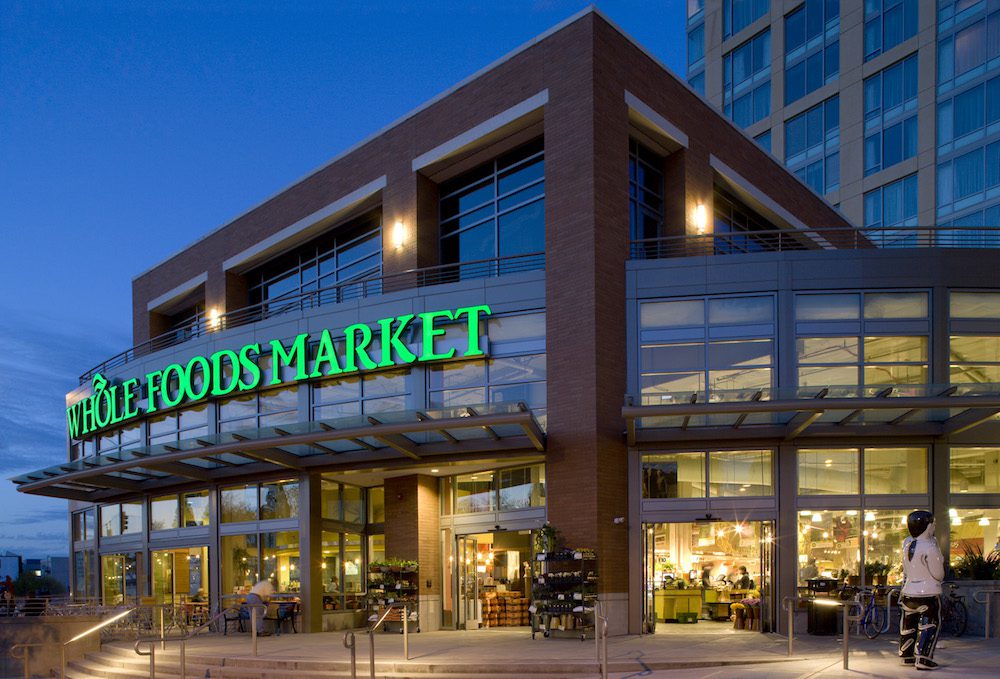
City Investors, INC- Vulcan- 2200 Westlake
As shoppers shift their food spending to grocery, retailers are diversifying to win these customers.
eCommerce giant Amazon, for one, is leveraging the breadth of its portfolio to get consumers into its grocery stores. For instance, footwear subsidiary Zappos recently announced that it is making label-free box returns available for free at grocery subsidiary Whole Foods Market stores across the country.
“As our customers’ needs evolve, we evolve with them to ensure we’re exceeding expectations and delivering WOW, at every step,” Zappos.com CEO Scott Schaefer said in a statement. “With Label Free Box Free Returns, we’re excited to not only be better serving our customers, but also to have found a natural partner in Whole Foods Market.”
The move shows Amazon leveraging its non-grocery assets such as the footwear seller to boost engagement with its grocery offerings. The eTailer has also taken a similar approach with its eCommerce offerings, for instance using its last Prime Day event to drive grocery adoptions with food- and beverage-specific deals.
Walmart, the world’s largest grocer, does the same. The company’s delivery subscription, Walmart+, is able to hold its own against competitors’ subscription offerings such as Instacart’s lower-priced Instacart+ by offering variety. The superstore chain promises not only delivery of groceries but also of an expansive range of other items, supplementing its product offerings with in-demand services such as video and music streaming.
Even pure-play grocers are being challenged to expand their offerings into new categories. For instance, Kroger, the largest pure-play grocer in the country, announced last month a partnership with DoorDash to provide on-demand delivery of sushi and floral arrangements.
“We are continuing to evolve and meet customers where and how they are shopping,” Stuart Aitken, senior vice president and chief merchant and marketing officer at Kroger, said in a statement at the time. “Providing fresh, affordable products to customers using familiar channels is another step in our commitment to provide anything, anytime, anywhere for every customer, every time.”
Similarly, in the United Kingdom, Asda, one of the top supermarket chains in the country, has been reevaluating its footprint, expanding beyond grocery retail into convenience. The chain announced last month that it is expanding its “Express” convenience store concept. The grocer plans to open 300 new locations by the end of 2026.
This expansion will focus on residential areas where the grocer does not have a presence. The small new stores will offer basic essentials, a limited selection of prepared foods as well as some alcoholic beverage options, the company said.
“With more than three quarters of the U.K. population visiting a convenience store in the last 12 months, the potential for growth in this market is significant,” Mohsin Issa, co-owner of Asda, said in a statement. “Our ambition is to become the convenience destination of choice.”
Yet, while major companies such as Kroger and Asda may be able to hold their own against increasing competition from cross-category mega-retailers, smaller pure-play grocers, especially independents, are at a disadvantage. This uneven footing makes it harder for these smaller merchants to take advantage of consumers’ shift towards grocery spending.
Research from PYMNTS’ study “Consumer Inflation Sentiment: Inflation Slowly Ebbs, but Consumer Outlook Remains Gloomy,” which drew from a survey of more than 2,100 U.S. consumers, revealed that, in response to inflation, 78% of consumers are eating at home more.